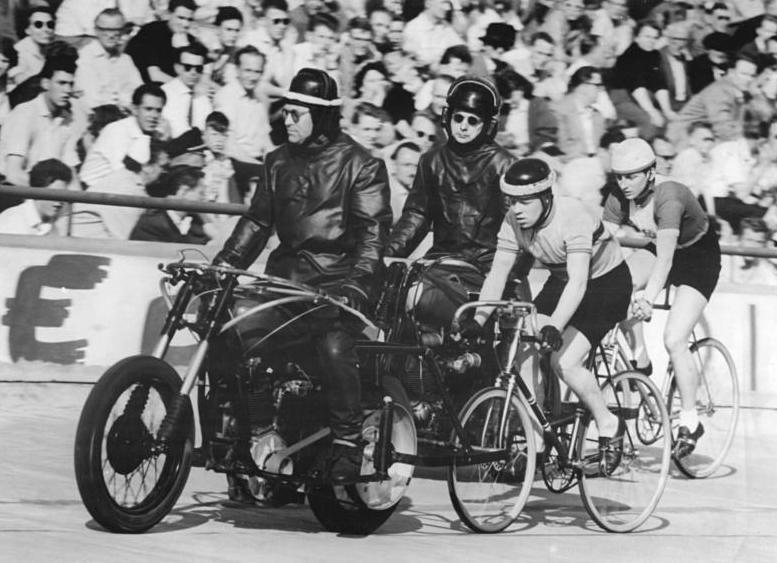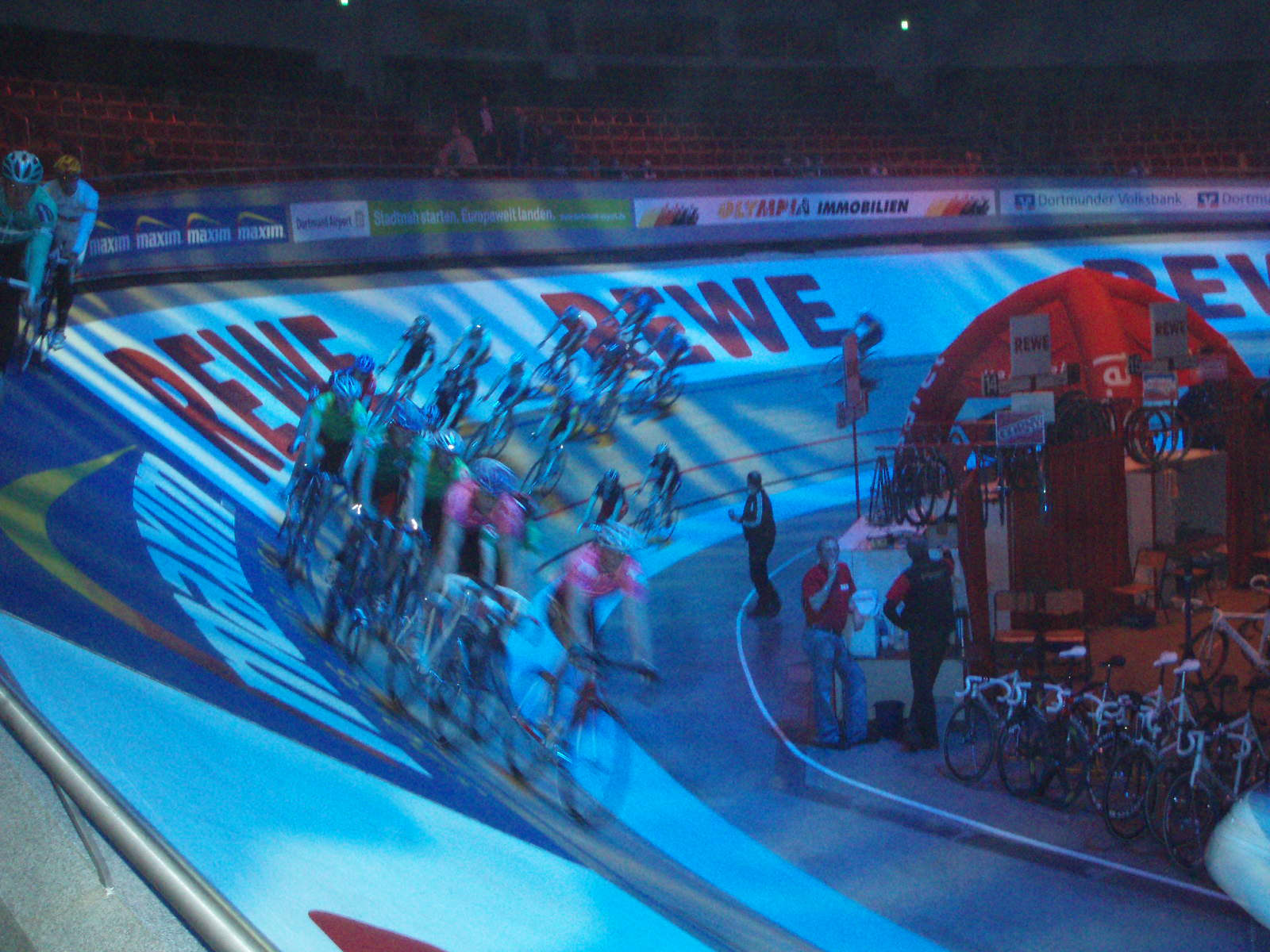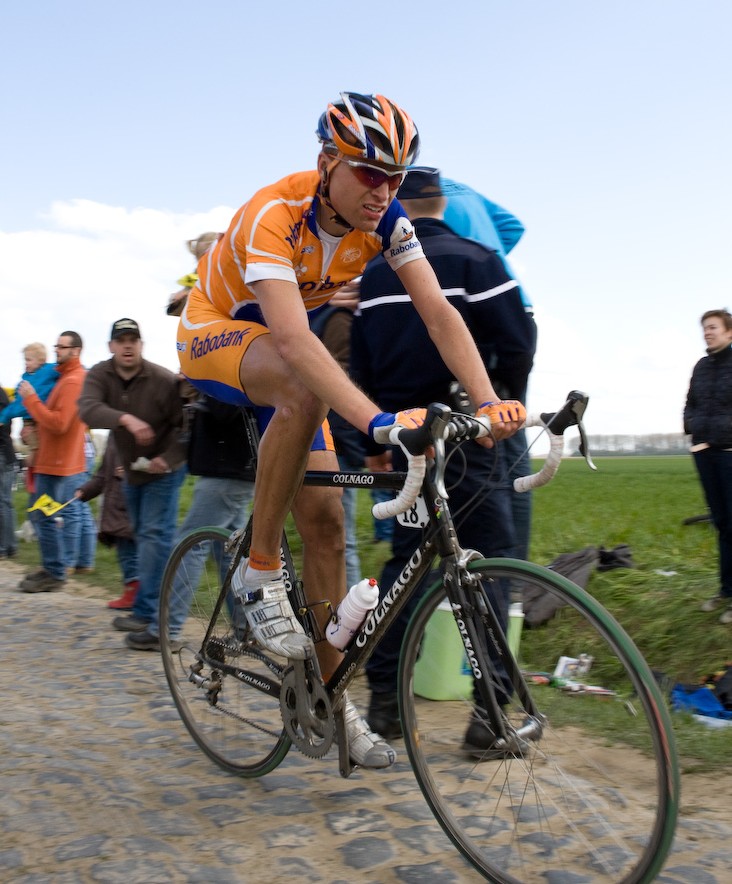|
Derny
A Derny is a motorized bicycle for motor-paced cycling events such as during six-day and Keirin racing and motor-paced road races. Some riders train behind a derny on the road. The Derny is so-called as it was originally produced by the French Derny firm, but the name ''Derny'' is now applied to all small cycle-pacing vehicles, regardless of manufacturer. The original Derny The first Derny 'Entraineur' or 'Bordeaux–Paris' moped, with its petrol tank mounted ahead of the handlebars, was built by ''Roger Derny et Fils'' of the Avenue de St Mandé, Paris, France, in 1938. A fleet of Dernys was maintained for the long-established 'Bordeaux-Paris' road-race and the Derny was used for many other track and road events and for endurance training. Derny also built a touring adaptation called the 'Solo' and tandems and mopeds. Being a moped, the Derny had both a Zurcher two-stroke engine and pedals on a chainring sprocket, typically with 70 teeth on the front and 11 on the rear- ... [...More Info...] [...Related Items...] OR: [Wikipedia] [Google] [Baidu] |
Derny Taon 125
A Derny is a motorized bicycle for motor-paced cycling events such as during six-day and Keirin racing and motor-paced road races. Some riders train behind a derny on the road. The Derny is so-called as it was originally produced by the French Derny firm, but the name ''Derny'' is now applied to all small cycle-pacing vehicles, regardless of manufacturer. The original Derny The first Derny 'Entraineur' or 'Bordeaux–Paris' moped, with its petrol tank mounted ahead of the handlebars, was built by ''Roger Derny et Fils'' of the Avenue de St Mandé, Paris, France, in 1938. A fleet of Dernys was maintained for the long-established 'Bordeaux-Paris' road-race and the Derny was used for many other track and road events and for endurance training. Derny also built a touring adaptation called the 'Solo' and tandems and mopeds. Being a moped, the Derny had both a Zurcher two-stroke engine and pedals on a chainring sprocket, typically with 70 teeth on the front and 11 on the rear-wh ... [...More Info...] [...Related Items...] OR: [Wikipedia] [Google] [Baidu] |
Motor-paced Racing
Motor-paced racing and motor-paced cycling refer to cycling behind a pacer in a car or more usually on a motorcycle. The cyclist (or stayer in this case) follows as close as they can to benefit from the slipstream of their pacer. The first paced races were behind other cyclists, sometimes as many as five riders on the same tandem. Bordeaux-Paris and record attempts have been ridden behind cars. More usually races or training are behind motorcycles. Origins of pacing Cyclists started to use tandem bicycles as pacers in the late 19th century. There could be as many as five riders on the pacing machine.The Bicycle, UK, 21 October 1953, p15 Because of the long distances covered when following a pacer, these cyclists were called stayers, a term used in long-distance horse racing. Companies such as Dunlop sponsored pacing teams,The Bicycle, UK, 6 February 1952, p2 and "tens of thousands" turned out to watch. A south London rider, J. W. Stocks, set British record of in an hour be ... [...More Info...] [...Related Items...] OR: [Wikipedia] [Google] [Baidu] |
Motorized Bicycles
A motorized bicycle is a bicycle with an attached motor or engine and transmission used either to power the vehicle unassisted, or to assist with pedalling. Since it sometimes retains both pedals and a discrete connected drive for rider-powered propulsion, the motorized bicycle is in technical terms a true bicycle, albeit a power-assisted one. Typically they are incapable of speeds above . Powered by a variety of engine types and designs, the motorized bicycle formed the prototype for what would later become the motor driven cycle. Terminology The term motorized bicycle refers to just a bicycle combining pedal power and internal combustion engine power. However, the term could be used as an umbrella category to refer to bicycles using sources besides pedal power. Electric bicycles technically could be in the category of motorized bicycles but instead of using internal combustion engines as a combination it is driven by electric motors which power from pedals and batteries. ... [...More Info...] [...Related Items...] OR: [Wikipedia] [Google] [Baidu] |
Bordeaux–Paris
The Bordeaux–Paris professional cycle race was one of Europe's classic cycle races, and one of the longest in the professional calendar, covering approximately – more than twice most single-day races. It started in northern Bordeaux in southwest France at 2am and finished in the capital Paris 14 hours later. The professional event was held from 1891 until 1988. It was held as an amateur event in 2014. History The event was first run on 23 May 1891, and the Derby of the Road as it was sometimes called, was notable in that riders were paced – allowed to slipstream – behind tandem or conventional cycles. From 1931, pacing was by motorcycles or small pedal-assisted Dernys. Pacing was also briefly by cars. In early events, pacing was provided from Bordeaux. In later events, it was introduced part-way towards Paris. From 1946 to 1985, more than half the distance was paced, Dernys being introduced at Poitiers or Châtellerault, roughly half-way. The organisers of the inaugur ... [...More Info...] [...Related Items...] OR: [Wikipedia] [Google] [Baidu] |
Six-day Racing
Six-day cycling is a track cycling event that competes over six days. Six-day races started in United Kingdom, Britain, spread to many regions of the world, were brought to their modern style in the United States and are now mainly a European event. Initially, individuals competed alone, the winner being the individual who completed the most laps. However, the format was changed to allow teams (usually of two riders each), one rider racing while the other rested. The 24-hours a day regime has also been relaxed, so that most six-day races involve six nights of racing, typically from 6pm to 2am, on indoor tracks (velodromes). Six-day events are annually hosted in London, Berlin, Ghent, Copenhagen, Hong Kong, Manchester, Melbourne and Brisbane. The overall winner is the team which completes most laps. In the event of teams completing the same number of laps, the winner is the team with most points won in intermediate competitions (see points race). As well as the 'chase' to gain laps ... [...More Info...] [...Related Items...] OR: [Wikipedia] [Google] [Baidu] |
Critérium Des As
The ''Critérium des As'' (''Race of the Aces'') was a cycle race that was generally held at the end of the season, with entry by invitation only, for the leading riders of the season. Competitors rode behind pacers on tandems or motorcycles. It was held from 1921 until 1990, mostly in Paris, France but also in Switzerland and Holland. The last Critérium des As was held in 1990 and was replaced by the Roue d'Or des As the following year. History In 1920 the ''Critérium de la résistance'' was run from Bordeaux to Paris ( Longchamp) and back to Bordeaux, and is regarded as the forerunner of ''Critérium des As''. The paced event was won by Louis Mottiat of Belgium, in 56 hours and 48 minutes. In 1921 the best riders of the season were invited to enter the ''Critérium des As'', 27 laps of a 3.63 km circuit around Longchamp. They rode alone except for pacers who helped on occasional laps, not being fast enough to last longer. Crowds of up to 6,000 watched in the years befo ... [...More Info...] [...Related Items...] OR: [Wikipedia] [Google] [Baidu] |
Belgium
Belgium, ; french: Belgique ; german: Belgien officially the Kingdom of Belgium, is a country in Northwestern Europe. The country is bordered by the Netherlands to the north, Germany to the east, Luxembourg to the southeast, France to the southwest, and the North Sea to the northwest. It covers an area of and has a population of more than 11.5 million, making it the 22nd most densely populated country in the world and the 6th most densely populated country in Europe, with a density of . Belgium is part of an area known as the Low Countries, historically a somewhat larger region than the Benelux group of states, as it also included parts of northern France. The capital and largest city is Brussels; other major cities are Antwerp, Ghent, Charleroi, Liège, Bruges, Namur, and Leuven. Belgium is a sovereign state and a federal constitutional monarchy with a parliamentary system. Its institutional organization is complex and is structured on both regional ... [...More Info...] [...Related Items...] OR: [Wikipedia] [Google] [Baidu] |
Outline Of Cycling
:''This article is an outline about the activity of cycling. For an outline about bicycles themselves, see outline of bicycles.'' :The following ''outline'' is provided as an overview of, as well as a topical guide to cycling: Cycling, also called bicycling or biking, is the activity of using / riding bicycles, (at least partially) human-powered, wheeled vehicles (typically by foot pedalling), for purposes including transport, recreation, social interaction, exercise, sport, therapy, other purposes, or any combination thereof. Persons engaged in cycling are called cyclists, bikers, or sometimes bicyclists. They typically either dress for where they are going, or for the cycling, sometimes having another set of clothing with them, or arranged. Apart from regular two-wheeled bicycles, cycling also includes riding unicycles, tricycles, quadricycles, and other similar human-powered wheeled vehicles (HPVs). Some bicycles are sold with (electric) motors (e-bikes), or other ... [...More Info...] [...Related Items...] OR: [Wikipedia] [Google] [Baidu] |
Classic Cycle Races
The classic cycle races are the most prestigious one-day professional road cycling races in the international calendar. Some of these events date back to the 19th century. They are normally held at roughly the same time each year. The five most revered races are often described as the cycling monuments. For the 2005 to 2007 seasons, some classics formed part of the UCI ProTour run by the Union Cycliste Internationale. This event series also included various stage races including the Tour de France, Giro d'Italia, Vuelta a España, Paris–Nice, and the Critérium du Dauphiné Libéré. The UCI ProTour replaced the UCI Road World Cup series (1989–2004) which contained only one-day races. Many of the classics, and all the Grand Tours, were not part of the UCI ProTour for the 2008 season because of disputes between the UCI and the ASO, which organizes the Tour de France and several other major races. Since 2009, many classic cycle races are part of the UCI World Tour. ... [...More Info...] [...Related Items...] OR: [Wikipedia] [Google] [Baidu] |
Keirin
– literally "racing cycle" – is a form of motor-paced cycle racing in which track cyclists sprint for victory following a speed-controlled start behind a motorized or non-motorized pacer. It was developed in Japan around 1948 for gambling purposes and became an official event at the 2000 Olympics in Sydney, Australia. Riders use brakeless fixed-gear bicycles. Races are typically long: 6 laps on a track, 4 laps on a track, or 4 laps on a track. Lots are drawn to determine starting positions for the sprint riders behind the pacer, which is usually a motorcycle, but can be a derny, electric bicycle or tandem bicycle. Riders must remain behind the pacer for 3 laps on a track. The pacer starts at , gradually increasing to by its final circuit. The pacer leaves the track before the end of the race (3 laps on a track). The winner's finishing speed can exceed . Competition keirin races are conducted over several rounds with one final. Some eliminated cyclists can t ... [...More Info...] [...Related Items...] OR: [Wikipedia] [Google] [Baidu] |




.jpeg)
